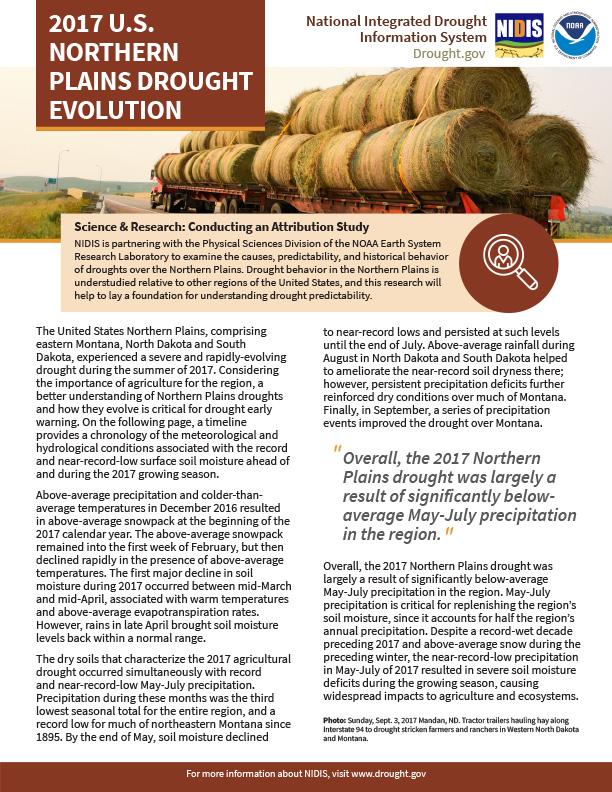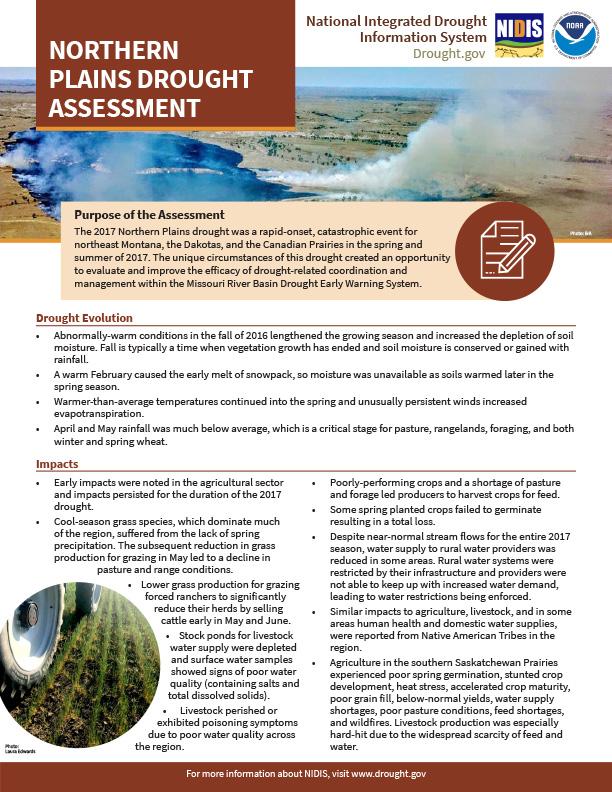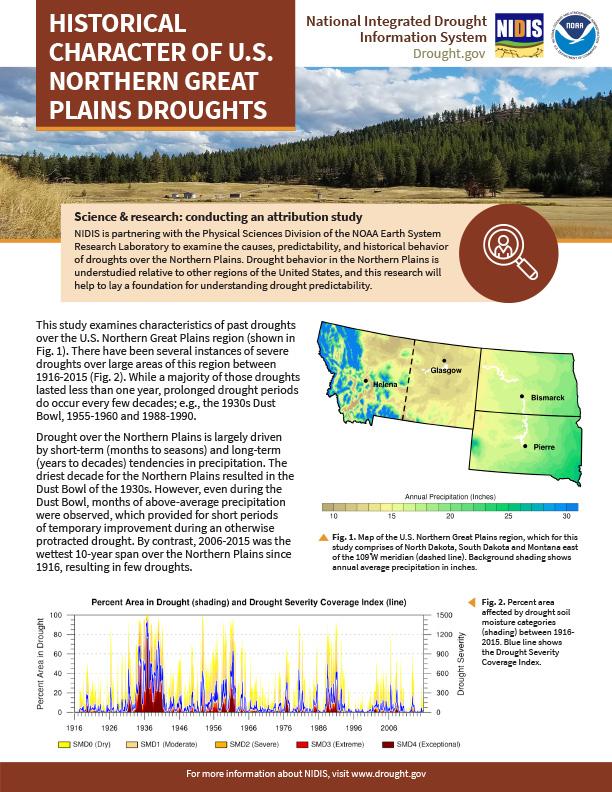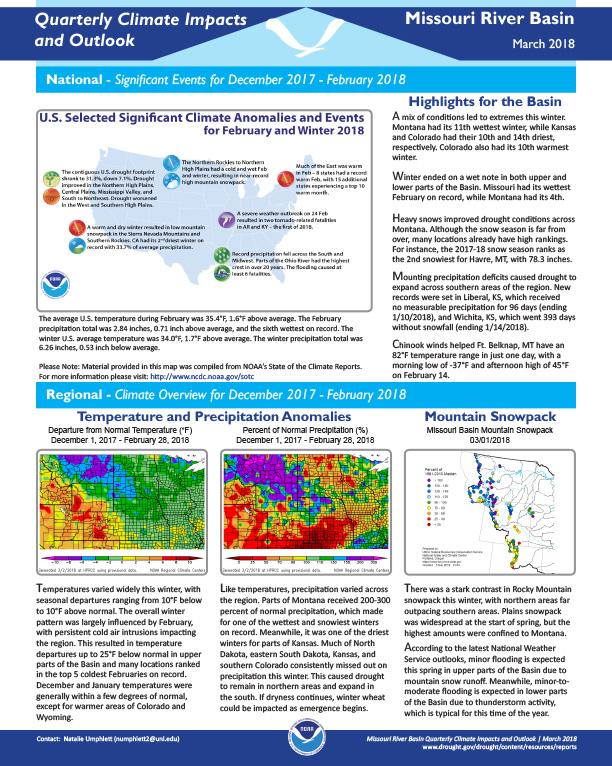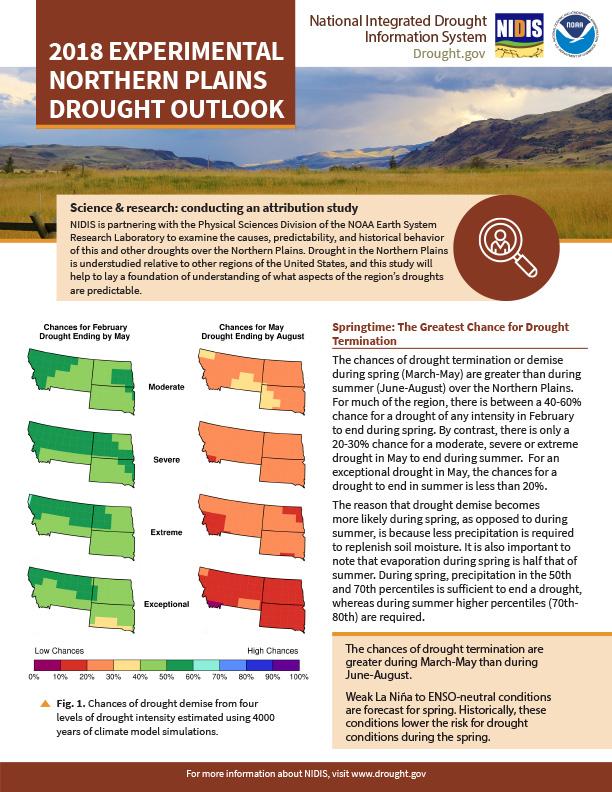For the latest forecasts and critical weather information, visit weather.gov.
The United States Northern Plains, comprising eastern Montana, North Dakota and South Dakota, experienced a severe and rapidly-evolving drought during the summer of 2017. Considering the importance of agriculture for the region, a better understanding of Northern Plains droughts and how they evolve is critical for drought early warning. In the document, a timeline provides a chronology of the meteorological and hydrological conditions associated with the record and near-record-low surface soil moisture ahead of and during the 2017 growing season.
The Northern Plains drought started in the spring and summer of 2017 and sparked widespread wildfires and compromised water resources, leading to the destruction of property, livestock losses, and reduced agricultural production. These impacts were felt in South Dakota, North Dakota, Montana, by the tribes of the Northern Plains, and in the Canadian Prairies.
This two-pager examines the characteristics of past droughts over the U.S. Northern Great Plains region. NIDIS is partnering with the Physical Sciences Division of the NOAA Earth System Research Laboratory to examine the causes, predictability, and historical behavior of droughts over the Northern Plains. Drought behavior in the Northern Plains is understudied relative to other regions of the United States, and this research will help to lay a foundation for understanding drought predictability.
Quarterly Climate Impacts and Outlook for the Missouri River Basin December 2017 – February 2018. Dated March 2018.
A mix of conditions led to extremes this winter. Montana had its 11th wettest winter, while Kansas and Colorado had their 10th and 14th driest, respectively. Colorado also had its 10th warmest winter. Winter ended on a wet note in both upper and lower parts of the Basin. Missouri had its wettest February on record, while Montana had its 4th.
NIDIS is partnering with the Physical Sciences Division of the NOAA Earth System Research Laboratory to examine the causes, predictability, and historical behavior of this and other droughts over the Northern Plains. Drought in the Northern Plains is understudied relative to other regions of the United States, and this study will help to lay a foundation of understanding of what aspects of the region’s droughts are predictable.
Quarterly Climate Impacts and Outlook for the Missouri River Basin September – November 2017. Dated December 2017.
Fall temperatures were above average for the majority of the Basin; however, the season ended quite warm, with many western states ranking in the top 10 warmest Novembers on record. This included Colorado (record warmest) and Wyoming (8th warmest). Precipitation, on the other hand, varied widely throughout the fall. This resulted in no top 10 rankings for wettest or driest fall.
Defines La Niña; gives outlook for winter temperatures and precipitation; possible effects of La Niña on the Missouri Basin, including agriculture, the economy, and the river itself.
NOAA’s Regional Climate Services Program created these Outlooks to inform the public about recent impacts within their respective regions. Each regional report contains easy-to-understand language, and anyone can access them through the Drought Portal at https://www.drought.gov/drought/resources/reports.
Quarterly Climate Impacts and Outlook for the Missouri River Basin June – August 2017. Dated September 2017.
Summer 2017 was full of extremes in the Basin. For example, Colorado had its 12th driest June followed by its 8th wettest July, while Nebraska had its 2nd driest June and its 12th wettest August. Montana’s weather was consistently warm and dry, with the state having its 2nd driest and 8th warmest summer on record (since 1895).


